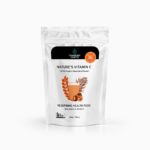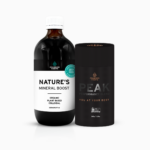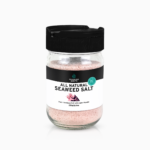In Chapter 42 (Pots, Pans and Packaging) of my book – Changing Habits Changing Lives I talk about the fact that food choices are very important.
I then go onto say that we also need to look at the packaging we buy our food in, the vessels we use to cook and bake our food and the containers that store our food. If you have the book I recommend you reread that chapter.
The research that is pouring out at the moment about the plastics industry and the chemicals that are leaching out into food is becoming more and more disturbing and there has been an outcry to ban some of these plastics from all baby food containers, bottles etc. But the cry should not just be for the babies but for everyone. These chemicals have diabolical effects on the body especially the hormone system.
Phthalates and Biphenol A are two chemicals out of many man made chemicals that have the onerous title of being; hormone disruptors or zeno-oestrogens. These are chemicals that block hormone receptor sites of men and women and have been suspected to cause erectile dysfunction and difficulty, man breasts, breast cancer, reproductive system cancers, infertility for both men and women, endometriosis, polycystic ovaries and fibrotic breasts and the feminisation of male embryos.
These chemicals are not easily excreted by babies and small children and should be avoided as much as possible during pregnancy. Adults should also try to avoid it. Many organisations around the world are lobbying for a ban of this component in all food packaging and containers intended for babies and children
Where do we find these chemicals?
Biphenol A – BPA
Biphenol A is usually found in hard plastics, baby drinking bottles, children drinking mugs, inside the plastic lining of tin cans, permanent sports drink bottles and the like. This plastic is often stamped with the number 7. If you look on the bottom of the bottle or container you will see a number 7 in a triangle. Sometimes there is no triangle, but the number 7 is clearly marked. See the chart using the following link for more information https://changinghabits.com.au/blogs/recyclable-items-chart.gif.
Phthalates
Phthalates have infiltrated not only our food and beverage packaging but are also found in vinyl products including vinyl flooring, PVC shower curtains, plastic furniture and even in the plastic coating of the insides of dishwashing machines. What most people don’t know is that phthalates are used in the coatings of medications; this coating is to create a slow release action for the drug. So if you are taking medications that are intended for slow release then the likely hood of phthalates being present is almost certain, this includes, pain killers, antidepressants, hormone medications and many more
Here are the ingredients of the pharmaceutical coating; acetone, purified water, hydrosypropyl methyl cellulose phthalate, vanillin, acetylated monoglycerides, alcohol.
Phthalates are also found in personal care items including perfume, eye shadow, moisturisers, nail polish, liquid soap and hair spray. Many baby personal care products also have phthalates, including, shampoo, soaps, moisturisers and powders. It is also found in home cleaning products.
To identify the plastic food containers that contain phthalates the number 1 in a triangle will be on the bottom of the container. Use the following link to access the chart for more information: https://changinghabits.com.au/blogs/recyclable-items-chart.gif.
While I have never believed that it is one thing that causes cancer or disease I believe it is an etiology of many factors that creates disease. By having the knowledge that these plastics affect the very fabric of sustainable life by effecting our hormones and reproductive capacity I think they are wise to avoid as much as possible. I do not believe that you can avoid these two endocrine disruptors everywhere, but at least having this knowledge will help you minimise you and your family’s exposure to these plastics.
Now more then ever we should be counting our chemical calories and Chapter 32 in my book Changing Habits Changing Lives titled Eliminating Chemical Calories is another must read for this month. Really look at your food containers as well as your personal care and cleaning products. And let’s not be part of the giant human experiment happening at the moment involving the saturation of the human body with chemicals.
In conclusion re read chapters 42 Pots Pans and Packaging and 32 Eliminate Chemical Calories of Changing Habits Changing Lives to see more information on this topic as well as the action steps to take in order to change to another healthy habit.








0 Comments